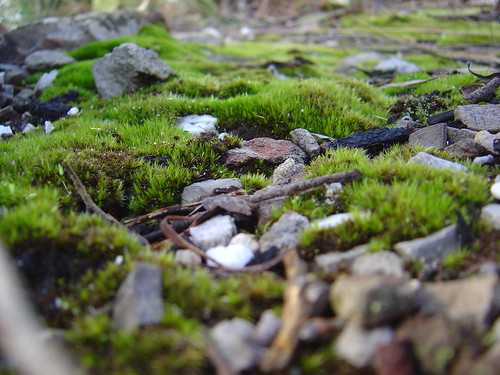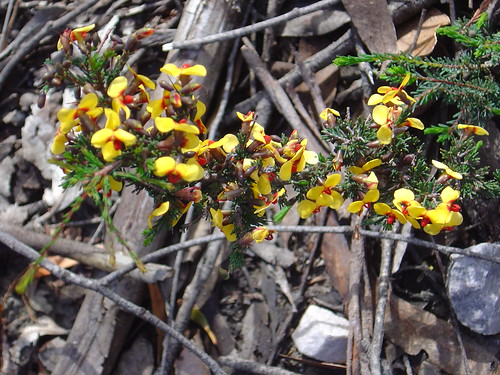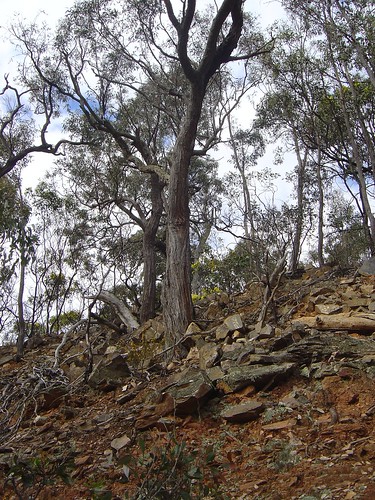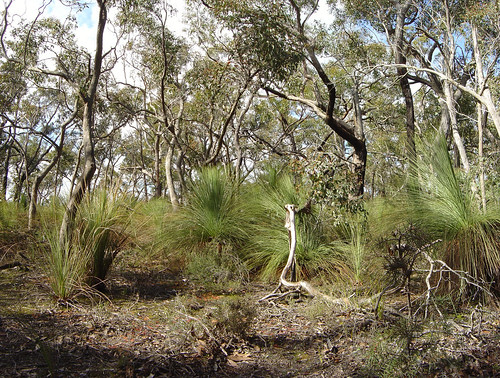How to get there
I had trouble locating the park entry using my TomTom GO. It didn’t even recognize “Balliang” so I had to resort to my trusty Melways. The park is around 60 km west of Melbourne via the Princes Highway towards Geelong (Melway Ref: 511 D3). Turn off at Werribee and then follow the Ballan-Geelong Road. An alternative way there, is to travel via the Western Freeway to Bacchus Marsh and follow the Geelong-Ballang Road, turning off to Boar Gully, Balliang or Anakie. I didn’t take the latter route. However, I think it’s the quickest way there from Melbourne.
Walk undertaken
This was my first visit to the park. I did the Slater Trail down to the footbridge and part of the Quarry trail. This wasn't exactly a highlight walk, but it was a good introduction to the park. I intend to visit again.
Main attractions
A feature of the park is the abundance and variety of flora. According to the visitor's guide there are some 619 native plant species (about one fifth of Victoria’s total) in the Brisbane Ranges.
For example, "Brisbane Ranges Grevillea, is only found along the Rowsley Fault; Velvet Daisy-bush is rare and found only in scattered locations across the state; Golden Grevillea is found elsewhere only in Gippsland.”
In spring there is a magnificent display of wattles, hakeas and bush peas. A variety of orchids can also be found throughout the area. The wildflowers were already starting to bloom at the time of my visit in August and there should be a good show in the next few weeks.


An illustrated guide to the wildflowers of the park has recently been produced by the Friends of Brisbane Ranges National Park. This can be accessed at:
http://home.vicnet.net.au/~fobr/plantlist.pdf
History of the Park
The Wathaurong Aboriginal tribe occupied the area around Geelong and small clans regularly occupied the Brisbane Ranges. To put it in the most diplomatic way possible, the indigenous population declined seriously following the uptake of pastoral runs around the Brisbane Ranges by squatters around the time Melbourne was founded. Most grazing was centred on richer lands along the Moorabool River to the east of the Ranges.
Gold was found in the Anakie hills in 1851 and miners began arriving soon after. This also had a deleterious impact on the native peoples. In 1855 many gold reefs were found near what became the town of Steiglitz. By 1862 there were over 600 miners in the area. The town’s fortunes slumped between 1876 and 1890, revived briefly until the early 1900s and then declined to the present ghost town status.
The gold years had a considerable impact on the ranges, as much of the forest was cut to provide mine props, building timber and firewood. One can see evidence of diggings throughout the Park.
The park was established in 1973. It comprises an area of some 77.18 km² and is located near the town of Meredith.
Birds and other wildlife
Among the mammals of the ranges are eastern grey kangaroos, wallabies, echidnas, possums and gliders. The small number of koalas has been increased over the years with stock from Phillip and French Islands in 1957 and 1977. They are reputedly common in the park and a research grid has been established by the Friends of the Brisbane Ranges to monitor their numbers. Unfortunately I didn't see any on my visit. The ranges were severely damaged by bushfire in January 2006 and some walks such as the Anakie Gorge walk are closed.
On my walk, I disturbed three eastern grey kangaroos near the junction of the Quarry Trail and the Slater Trail. They took off too quickly for me to take a photo.
Over 170 species of native birds have been recorded in the park. Three species of particular note are the Yellow-tufted Honeyeater, White-throated Nightjar and Rainbow Bee-eater. Bird lists are available from the Anakie Information office .

Challenges
A serious problem in the park is the presence of Cinnamon Fungus. This organism invades the fine roots of many native plant species, causing root rot. Infected plants have difficulty absorbing enough water through their remaining roots, particularly in summer and may die. There is no cure for the disease and several trails are closed in an attempt contain the spread of the disease by preventing the movement of infected soil.
I also noticed that several parts of the park appeared to have been burnt out by bushfire. l quite like this park. There's a large number of walks to do and it's proximity to Melbourne means you can do half day walks. Allow one hour driving there, an hour back and three hours walking. Perfect.
I'm sorry I'd not visited it earlier. I will put up an update of the park after my next visit sometime in September.
